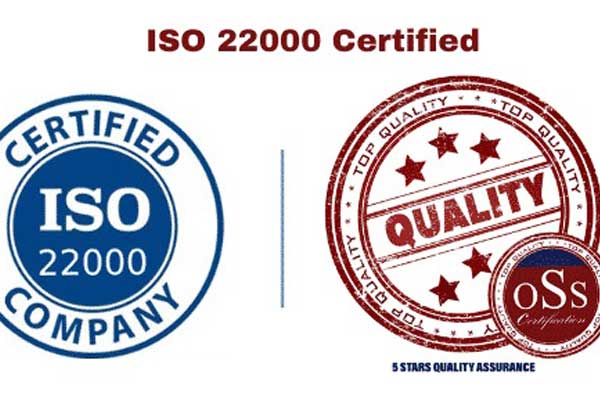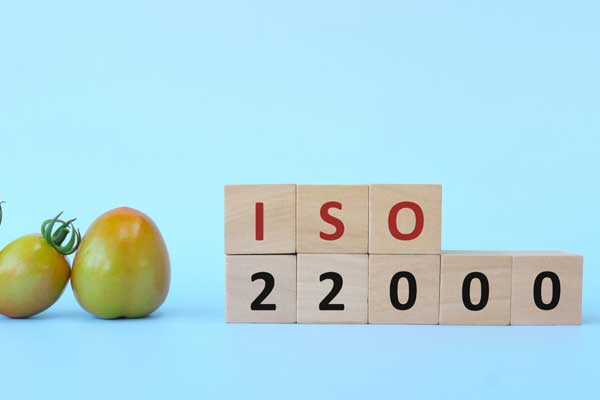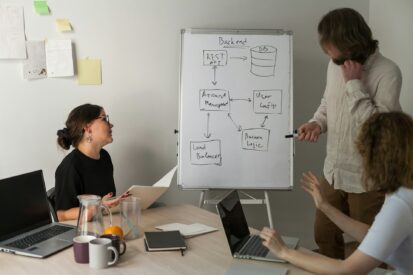After its last update in 2018, ISO 22000 has revised its structure and now follows the same high-level structure called Annex SL utilised by ISO 9001. In this article, we will discuss what ISO 22000:2018 standard is, how it differs from ISO 9001, and what the similarities are between the two.
What is ISO 22000:2018?
The ISO 22000:2018 standard is a standard that guides organisations to build their customised, effective and effervescent Food Safety Management System (FSMS). The standard provides directions for any organisation directly or indirectly involved in the food chain operation. Examples of such organisations include animal food producers, feed producers, producers of food ingredients, food manufacturers, retailers, and so on. Initiation of the standard took place in 1969 when pertinent factors from the Hazard And Critical Control Points (HACCP) were taken to fulfil management system requirements for food safety. Currently, the standard is utilised to provide strategic direction to all food-related organisations, helping them improve their overall performance and food safety by implementing an FSMS, which benefits them by:
- Enhancing the organisation’s ability to exhibit compliance with the ISMS requirements.
- Improving the business’s ability to provide safe food products or services while meeting customer requirements and compliance obligations.
- Identifying relevant issues related to food safety and mitigating risks through a food safety system.

Most significant differences in ISO 22000:2018 update
The previous version of ISO 22000 utilised concepts of HACCP and ISO 9001 to build a quality assurance method that addressed food-related risks. While all the requirements for a Quality Management System (QMS) remain the same in the revised version of ISO 22000:2018, some specific technical requirements are added that make the standard appropriate for all food-related organisations. These requirements include:
- Changes in operational planning and control, where organisations are expected to modify their operations while simultaneously placing safeguards for food safety.
- The addition of a traceability system that can trace food products uniquely.
- Prerequisite Programs (PRP) are some primary conditions and activities organisations must adhere to maintain a hygienic and sterile environment throughout the food chain.
- Hazard control includes performing hazard analysis, defining and validating control measures and preparing HACCP plans.
- Controlling nonconforming products or processes by including specific criteria for recall or withdrawal.
- Controlling, monitoring and measuring by creating specific systems that evaluate the efficiency of processes.
- Updating information by creating a specific workflow that regularly updates information regarding hazard control plans and PRPs.
- Defining PRPs and hazard control plans through a separate evaluation process.
What are the similarities between ISO 9001 and ISO 22000:2018?
Both standards were revised recently to include the new high-level structure, Annex SL. As a result of this inclusion and modifications to the structure, it becomes easier for business owners to integrate the standards. This means that if a business already has ISO 9001, it will be easier to integrate ISO 22000, ISO 14001 or ISO 45001.
From a pure implementation perspective, both standards have similar requirements, including:
- Context of the organisation, where it is necessary to determine internal and external issues, external parties’ needs and the management system’s scope.
- Control of documented information by creating, modifying and improving documents and records.
- Addressing risks and opportunities through proper planning and specific objectives.
- Continual improvement through regular assessments and the application of corrective actions.
- Conducting internal audits to find discrepancies and discussing them in management reviews.
- Enhanced focus on competence through training and awareness programmes.

What are the differences between ISO 9001 and ISO 22000:2018?
The main difference between ISO 9001 and ISO 22000:2018 is in clause 8. This clause outlines the technical requirements and provides a basic framework to ensure that food safety in the entire food chain operations is maintained in ISO 22000, whereas ISO 9001 provides a generic framework to ensure that the quality processes are maintained, dependent upon the scope of the organisation.
ISO 9001 demonstrates that proper product design and production are taking place. From this perspective, the scope of ISO 9001 contains five main pillars, namely:
- Quality management system.
- Demonstration of leadership commitment.
- Resource management.
- Product realisation.
- Periodic measurement, analysis and improvement.
Similarly, the purpose of ISO 22000 is to help food-related organisations be accepted in the food supply chain. Hence, from this perspective, it contains four main pillars, namely:
- Demonstration of management responsibility.
- Resource management.
- Secure product planning, adhering to PRPs and implementation.
- Completion, modification, verification and improvement of FSMS.
How can implement ISO 9001:2015 fast track ISO 22000:2018 implementation?
Food safety depends upon the quality of your processes; hence, if you have a good quality management system in place, it will automatically add more value to your FSMS. Technically, if you want to implement ISO 22000 after ISO 9001, all you need to do is take care of your food safety requirements as per clause eight, and the rest is taken care of by the ISO 9001-compliant QMS.
Also read “Difference between ISO 9002 versus ISO 9001”
Conclusion
ISO 9001 outlines the requirements to build a quality management system, whereas ISO 22000 guides organisations to implement a food safety management system.








Users Comments
Get a
Quote